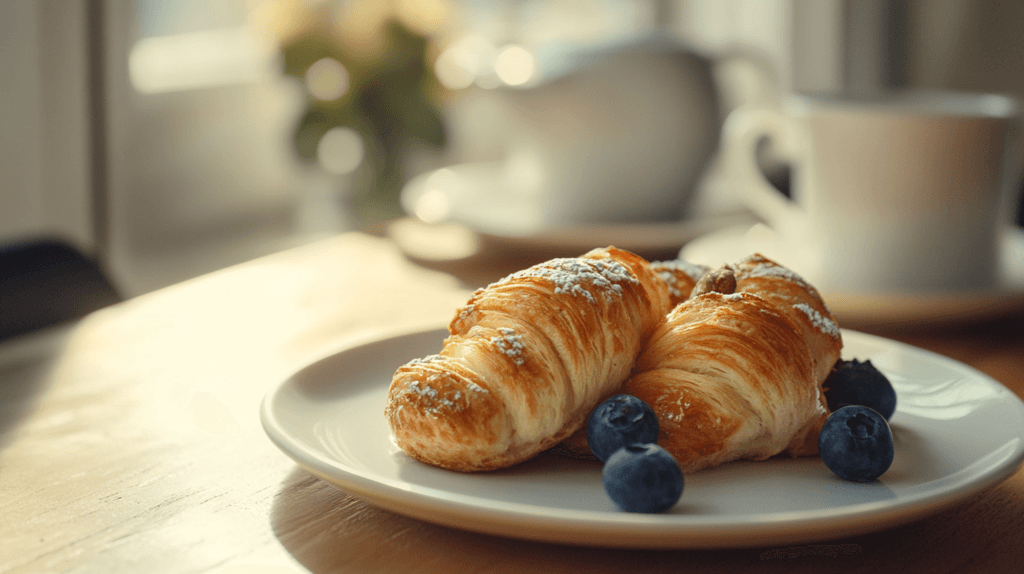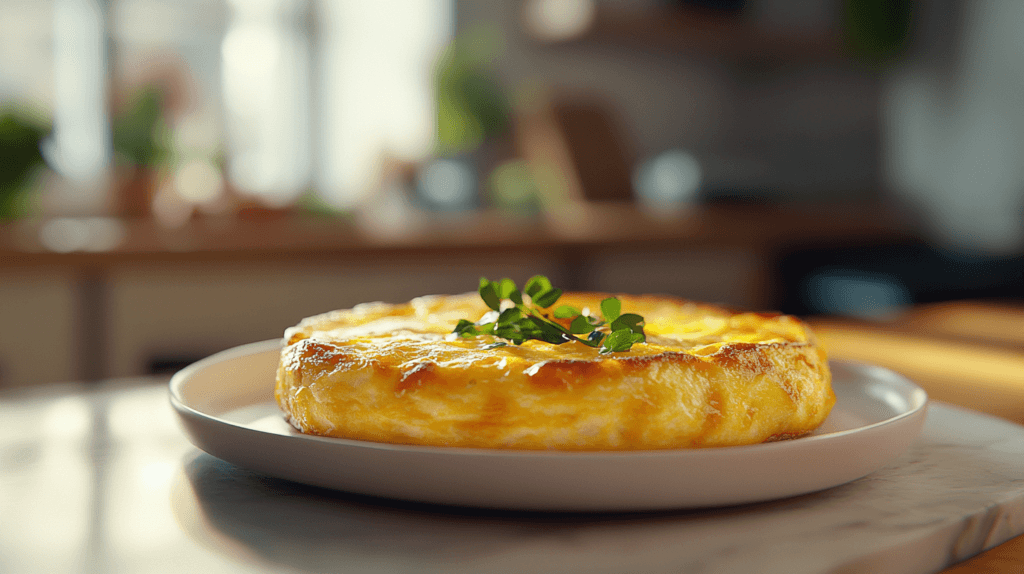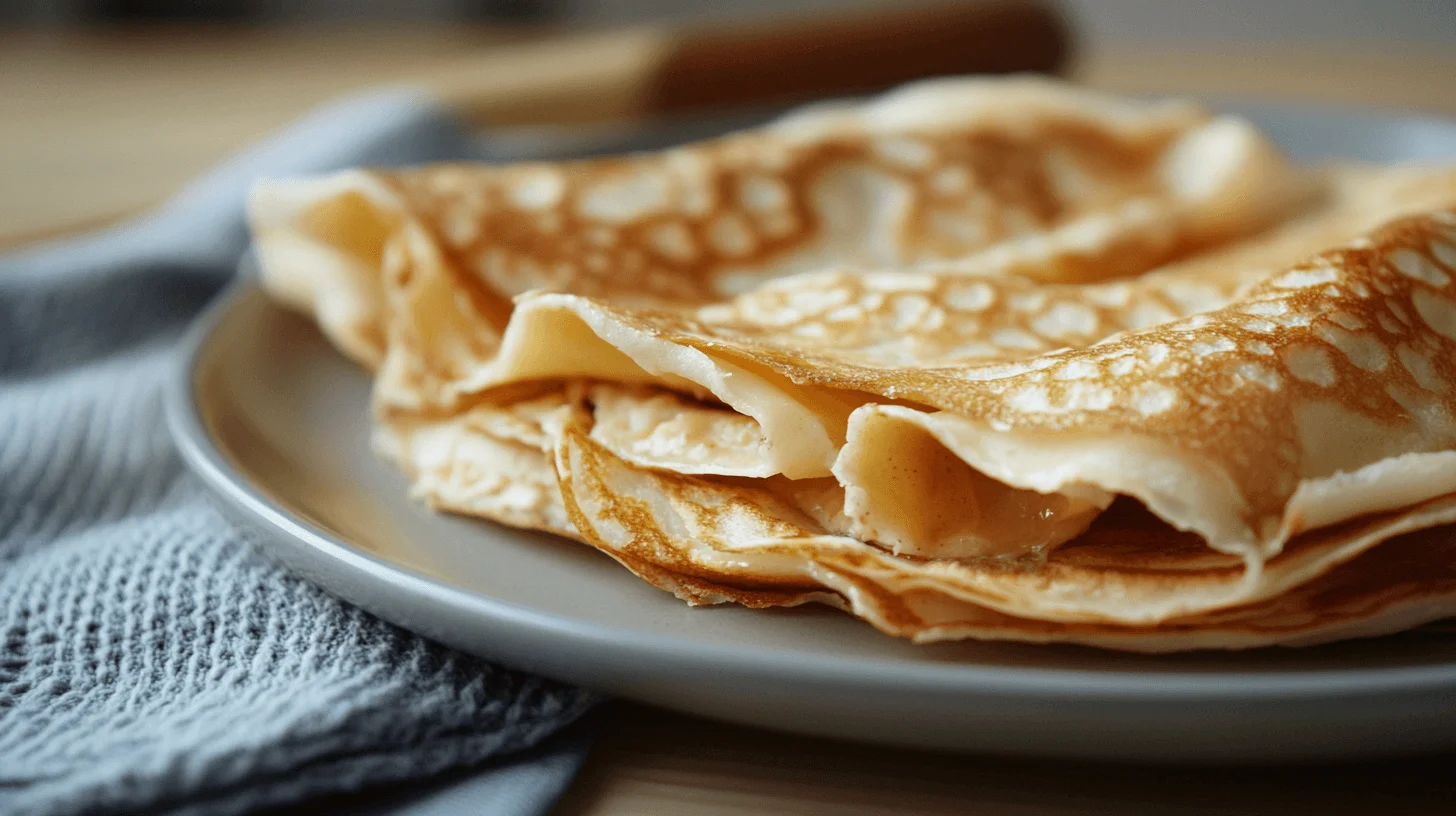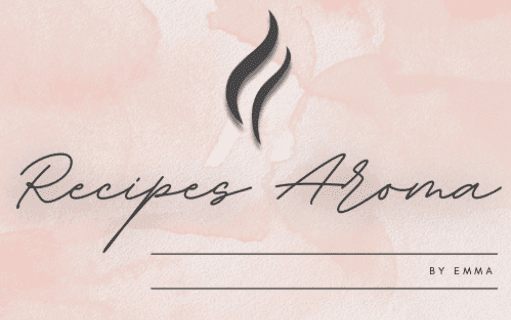A Breakfast Plate is more than just a meal—it’s a canvas for creativity and a balance of flavors, textures, and nutrients. From hearty classics like eggs and bacon to lighter fare like avocado and fresh fruit, breakfast plates are versatile and customizable to suit any preference or dietary need. Whether you’re preparing a quick morning bite or a full weekend feast, a thoughtfully arranged breakfast plate is the ultimate way to start your day.
Table of contents
- Why Breakfast Plates Are a Must-Try
- Components of a Balanced Breakfast Plate
- Breakfast Plate Ideas
- Customizing Your Breakfast Plate
- Tips for Perfect Breakfast Plates
- Serving Suggestions for Breakfast Plates
- FAQs About Breakfast Plates
- Can I make breakfast plates ahead of time?
- What’s the best way to add variety to a breakfast plate?
- Are breakfast plates healthy?
- How do I keep warm components warm?
- Can I make breakfast plates kid-friendly?
- What’s a good side dish for breakfast plates?
- How do I add international flavors to my breakfast plate?
- Explore More Recipes Like These
Why Breakfast Plates Are a Must-Try
Breakfast plates offer the perfect opportunity to combine a variety of flavors and ingredients into one satisfying meal. They can range from simple combinations to elaborate spreads, allowing for flexibility based on time, ingredients, and appetite. By including a balance of protein, healthy fats, and carbohydrates, a breakfast plate ensures you stay energized and satisfied throughout the morning.
For more breakfast inspiration, visit our Breakfast Category. Pair your plate with our Chia Seed Pudding for a light, nutritious side dish.
Components of a Balanced Breakfast Plate
1. Protein
Protein keeps you full and energized. Common choices include:
- Scrambled, poached, or sunny-side-up eggs
- Breakfast sausage or bacon
- Smoked salmon or tofu scramble
2. Carbohydrates
Carbs provide energy to fuel your morning. Consider:
- Whole-grain toast or bagels
- Hash browns or roasted sweet potatoes
- Pancakes or waffles
3. Vegetables
Add freshness and nutrients with:
- Sautéed spinach or kale
- Grilled tomatoes or roasted bell peppers
- Avocado slices
4. Fruits
Balance savory flavors with natural sweetness from:
- Fresh berries, melon, or orange slices
- Sliced banana or apple
- A small fruit salad
5. Extras
Enhance your plate with creative additions:
- Cheese, such as feta or cheddar
- Spreads like guacamole, hummus, or nut butter
- Sauces or condiments like salsa or hot sauce
Breakfast Plate Ideas
Classic American Breakfast Plate
- Scrambled eggs
- Crispy bacon or sausage links
- Hash browns
- Toast with butter and jam
Mediterranean Breakfast Plate
- Sliced cucumber, cherry tomatoes, and olives
- Hard-boiled eggs
- Hummus or baba ganoush
- Whole-grain pita bread
Vegetarian Breakfast Plate
- Tofu scramble with spinach
- Roasted sweet potatoes
- Sliced avocado with a sprinkle of salt and chili flakes
- Fresh fruit like strawberries or blueberries
Sweet Breakfast Plate
- Pancakes or waffles with maple syrup
- Fresh fruit like banana slices and berries
- Yogurt or whipped cream
- A drizzle of honey
Protein-Packed Breakfast Plate
- Poached eggs
- Grilled chicken or turkey sausage
- Sautéed kale or spinach
- Avocado slices
For more options, check out our Avocado Breakfast Sandwich for inspiration.
Customizing Your Breakfast Plate
- Dietary Adjustments: Use gluten-free toast, dairy-free spreads, or plant-based proteins for specific dietary needs.
- Add Flavor: Include fresh herbs like cilantro or parsley, or sprinkle spices like paprika or cumin for extra flavor.
- Seasonal Ingredients: Use fruits and vegetables that are in season for optimal freshness and taste.
For more creative ideas, visit our Snacks Category.

Tips for Perfect Breakfast Plates
- Keep It Balanced: Aim for a mix of protein, carbs, and healthy fats.
- Use Fresh Ingredients: Fresh fruits, vegetables, and quality proteins elevate the plate.
- Plan Ahead: Pre-cook items like roasted potatoes or hard-boiled eggs to save time in the morning.
- Presentation Matters: Arrange components neatly for a visually appealing plate.
Pair your breakfast plate with our Blueberry Bagel Recipe for a flavorful addition.
Serving Suggestions for Breakfast Plates
- Family Style: Serve components like eggs, bacon, and toast on separate platters so everyone can build their own plate.
- For Brunch: Include a mix of sweet and savory items like pancakes, fruit, and avocado.
- On the Go: Pack protein, vegetables, and a slice of toast in a meal-prep container for a portable breakfast plate.
Nutrition Facts for a Breakfast Plate
Average per serving (based on a typical breakfast plate, approximately 1 serving):
- Calories: 350–500
- Protein: 15–25g
- Carbohydrates: 25–40g
- Sugars: 5–10g
- Dietary Fiber: 3–6g
- Total Fat: 10–20g
- Saturated Fat: 3–6g
- Sodium: 300–500mg
A breakfast plate is a versatile and customizable meal that can feature a variety of elements such as eggs, toast, fruits, and proteins. It’s the perfect choice for those seeking a hearty and balanced breakfast to kickstart their day.
Regional Variations of Breakfast Plate
Breakfast plates around the world reflect local ingredients and culinary traditions:
American Breakfast Plate
- Key Ingredients: Scrambled eggs, bacon or sausage, hash browns, and toast.
- Flavor Profile: Savory, crispy, and satisfying.
- Pairing: Serve with a side of orange juice or black coffee.
Mediterranean Breakfast Plate
- Key Ingredients: Fresh tomatoes, cucumbers, olives, feta cheese, and pita bread.
- Flavor Profile: Light, tangy, and refreshing.
- Pairing: Complement with mint tea or fresh lemonade.
English Breakfast Plate
- Key Ingredients: Fried eggs, baked beans, grilled tomatoes, mushrooms, and toast.
- Flavor Profile: Hearty, savory, and rich.
- Pairing: Best enjoyed with a cup of English breakfast tea.
Mexican Breakfast Plate
- Key Ingredients: Scrambled eggs, chorizo, refried beans, and tortillas.
- Flavor Profile: Spicy, smoky, and bold.
- Pairing: Pair with fresh salsa or guacamole.
Japanese Breakfast Plate
- Key Ingredients: Steamed rice, miso soup, grilled fish, and pickled vegetables.
- Flavor Profile: Clean, umami-rich, and balanced.
- Pairing: Serve with hot green tea or a cold barley tea.
Fun Cooking Techniques for Kids
Kids can enjoy preparing their own breakfast plate with these activities:
Scrambling Eggs
- Activity: Allow kids to whisk eggs and pour them into a pan.
- Learning Outcome: Introduces them to basic cooking techniques and safety.
Arranging a Fruit Plate
- Activity: Help kids slice fruits and arrange them creatively on a plate.
- Learning Outcome: Encourages creativity and an appreciation for healthy choices.
Building Mini Toasts
- Activity: Let kids spread butter, avocado, or peanut butter on toast and add toppings.
- Learning Outcome: Teaches them about flavor combinations and textures.
Plating the Dish
- Activity: Allow kids to assemble their own breakfast plate with a variety of options.
- Learning Outcome: Develops decision-making and presentation skills.
Kitchen Tools to Elevate a Breakfast Plate
- Non-Stick Skillet
- Ideal for frying eggs, bacon, or sausages.
- Mixing Bowls
- Useful for whisking eggs or mixing pancake batter.
- Toaster
- Perfect for quickly preparing toast or bagels.
- Cutting Board
- Essential for slicing fruits, vegetables, or meats.
- Paring Knife
- Handy for cutting small or delicate items like berries or herbs.
- Plating Tweezers
- Adds precision to garnish placement for an elegant touch.
- Juicer
- Great for preparing fresh orange juice or lemonade.
Common Mistakes to Avoid
- Overcooking Eggs
- Cook eggs gently for a soft, creamy texture.
- Ignoring Presentation
- Arrange elements neatly to make the plate visually appealing.
- Skipping Seasoning
- Add salt, pepper, or herbs to enhance flavors.
- Serving Overly Greasy Items
- Drain fried items on paper towels to avoid excess oil.
- Lack of Variety
- Include a mix of proteins, carbs, and vegetables for balance.
Creative Add-Ins
- Vegetables
- Include sautéed spinach, grilled asparagus, or roasted tomatoes.
- Cheese
- Add shredded cheddar, goat cheese, or Parmesan for richness.
- Herbs
- Garnish with fresh parsley, chives, or dill for flavor and color.
- Fruits
- Add fresh berries, orange slices, or melon cubes for a sweet contrast.
- Sauces
- Include hollandaise, salsa, or aioli for dipping or drizzling.
How to Double or Scale Breakfast Plates
- Batch Cooking
- Prepare eggs, bacon, or pancakes in larger quantities.
- Use a Griddle
- Cook multiple items simultaneously for efficiency.
- Pre-Cut Ingredients
- Slice fruits and vegetables ahead of time for quick assembly.
- Set Up a Breakfast Bar
- Allow guests to build their own plates with a variety of options.
How to Store Breakfast Plate Items
- Refrigeration
- Store cooked items like bacon or eggs in airtight containers for up to 3 days.
- Freezing
- Freeze pancakes, waffles, or muffins for up to 3 months.
- Reheating
- Warm items gently in the oven or on the stovetop to preserve textures.
- Separate Components
- Store sauces, fruits, or dressings separately to maintain freshness.
Breakfast Plate in Culture
The breakfast plate is a universal concept, showcasing the diversity of global breakfast traditions. Whether it’s a hearty American plate, a light Mediterranean spread, or an umami-rich Japanese selection, this meal format highlights the beauty of variety and balance.
Breakfast plates are more than just food—they represent cultural identity, comfort, and a celebration of morning rituals.
How to Adapt Breakfast Plates for Special Diets
- Gluten-Free Option
- Use gluten-free bread, pancakes, or waffles.
- Low-Sodium
- Season lightly and use fresh ingredients to control salt content.
- Dairy-Free
- Replace butter and cheese with plant-based alternatives.
- Vegan-Friendly
- Focus on tofu scrambles, roasted vegetables, and fresh fruits.
- Keto-Friendly
- Include eggs, avocado, and bacon while avoiding starchy sides.
How to Adapt Breakfast Plates for Special Occasions
- Holiday Brunch
- Add festive touches like cranberry compote or spiced syrups.
- Birthday Breakfast
- Include sweet elements like pancakes or waffles topped with whipped cream.
- Team Gatherings
- Arrange a variety of sides like bagels, fruit platters, and eggs for a customizable spread.
- Casual Weekends
- Keep it simple with toast, jam, and scrambled eggs.
- Family Brunch
- Serve a mix of sweet and savory items to cater to all tastes.

FAQs About Breakfast Plates
Can I make breakfast plates ahead of time?
Yes! Pre-cook items like roasted vegetables, hard-boiled eggs, or pancakes and store them in the refrigerator. Assemble your plate fresh in the morning.
What’s the best way to add variety to a breakfast plate?
Switch up the components daily, such as using different proteins (e.g., eggs, tofu, salmon) or incorporating new vegetables or fruits.
Are breakfast plates healthy?
They can be! Focus on whole, minimally processed ingredients like fresh produce, lean proteins, and whole grains for a nutritious plate.
How do I keep warm components warm?
Cover cooked items with foil or place them in a low oven (200°F or 93°C) while assembling the rest of the plate.
Can I make breakfast plates kid-friendly?
Yes! Use smaller portions and include fun items like mini pancakes, fruit skewers, or scrambled eggs with cheese.
What’s a good side dish for breakfast plates?
Consider yogurt parfaits, chia seed pudding, or a smoothie to complement your plate.
How do I add international flavors to my breakfast plate?
Incorporate elements from different cuisines, like Mediterranean hummus, Asian soy-glazed tofu, or Mexican-inspired salsa and beans.
Explore More Recipes Like These
If you enjoyed these ideas, try:
- French Toast Recipe for a sweet breakfast addition.
- Stuffed Portobello Mushrooms for a hearty brunch option.
A thoughtfully crafted Breakfast Plate is the ultimate way to start your day with variety and satisfaction. Whether you’re keeping it simple or creating a gourmet spread, these ideas will inspire your next morning masterpiece. Get creative and enjoy your perfect breakfast plate today!


